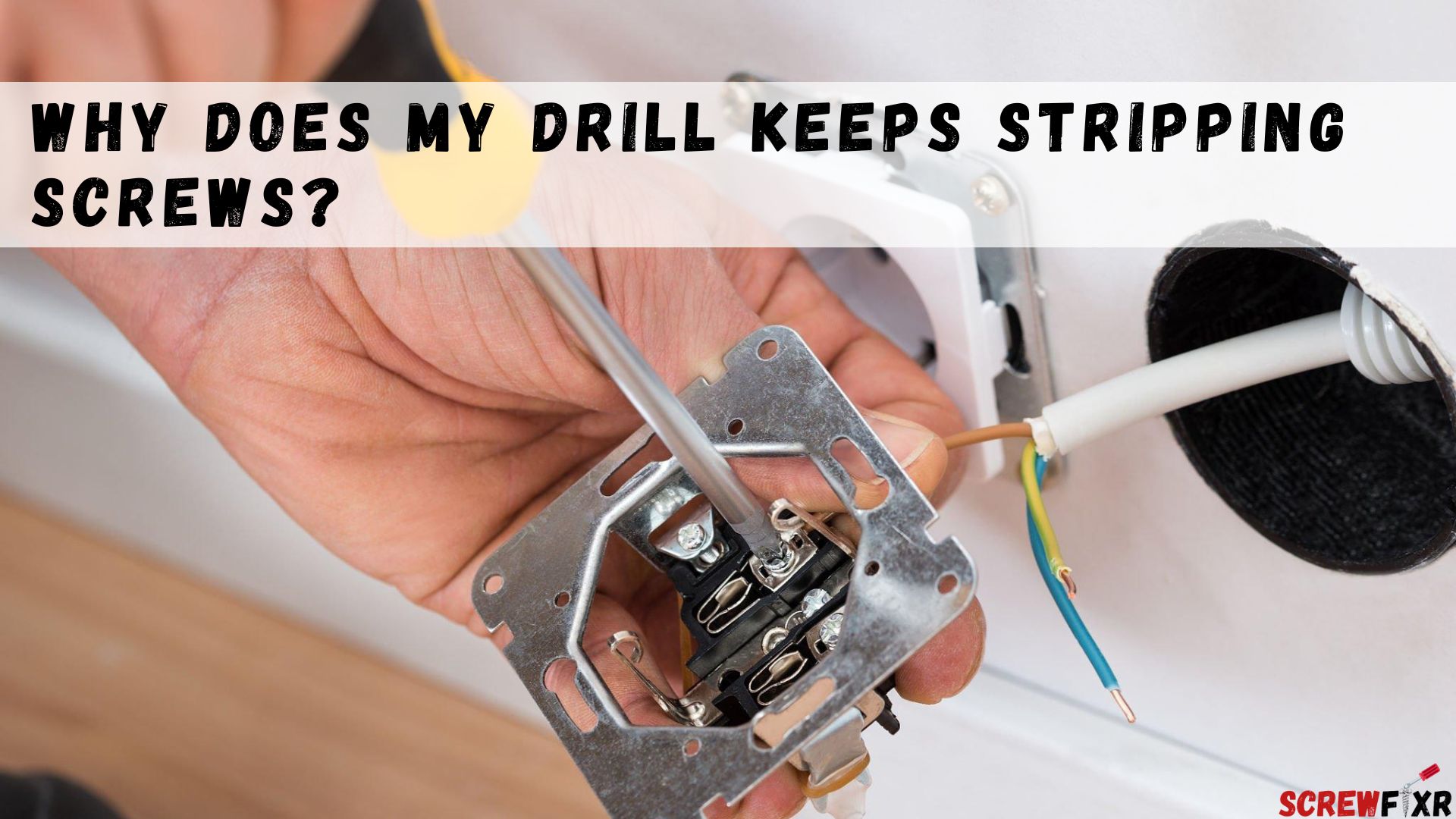Are you tired of dealing with stripped screws when using your drill? Whether you’re a DIY enthusiast, a professional handyman, or just someone who needs to complete some basic household repairs, stripping screws can be incredibly frustrating. But why does this happen, and how can it be prevented?
Let’s explore why does my drill keeps stripping screws, as well as provide helpful tips on how to prevent them from happening in the future. By understanding the basics behind drill stripping and taking the necessary preventative steps, you can save yourself a great deal of time and hassle.
Causes Of Drill Stripping Screws
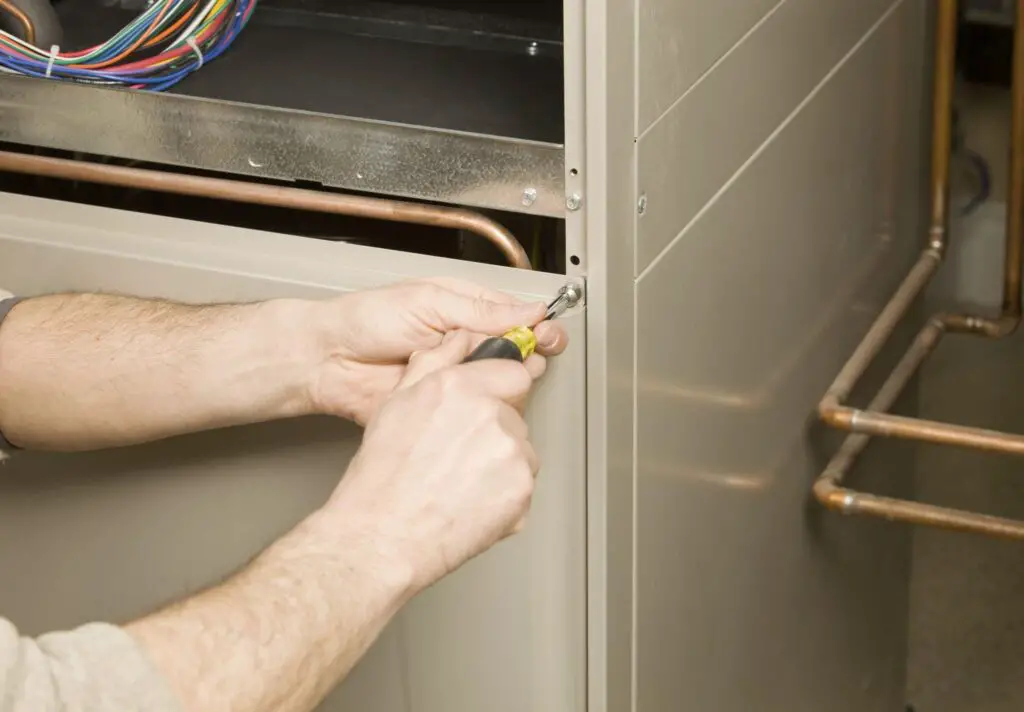
- Wrong drill: If you are using the wrong type of drill for the job, it can lead to stripped screws. For example, using a cordless drill on a heavy-duty project can lead to the drill not having enough power to properly drive the screw. It’s important to use the right drill for the job, whether it’s a cordless drill, a corded drill, or a hammer drill, as this will ensure that the drill has enough power to drive the screws without stripping them.
- Wrong screwdriver bit: Using the wrong screwdriver bit can also lead to stripped screws. Each type of screw requires a specific screwdriver bit, so using the wrong one can cause the screw to strip or become damaged. For example, using a Phillips head bit on a slotted screw can cause the screw to strip, so it’s important to use the correct bit for the screw you are using.
- Worn screwdriver bits: Over time, screwdriver bits can become worn and dull. This can cause the bit to slip and strip the screw, making it difficult to drive. To prevent this, it’s important to regularly check the condition of your screwdriver bits and replace them when they become worn or damaged.
- Poor quality screwdriver bit: Cheap, low-quality screwdriver bits can also cause stripped screws. These bits are more likely to slip and strip the screw, making it difficult to drive. Investing in high-quality screwdriver bits can help prevent this problem and ensure that your screws are driven in properly.
- Poor quality screws: Low-quality screws can also lead to stripped screws. These screws are more likely to be made of soft metal, which can strip more easily. To prevent this, it’s important to use high-quality screws that are made of strong, durable metal.
- Over-tightening the screw: Over-tightening the screw can cause the threads to strip and the screw head to break off. To prevent this, it’s important to use a torque wrench or to use a screwdriver that has a clutch that will stop when the correct torque is reached.
- No pilot hole: If you are driving a screw into a hard material, it can be helpful to make a pilot hole first. This will help prevent the screw from stripping. A pilot hole is a small hole that you drill into the material before driving the screw. This hole helps to guide the screw and reduces the chance of the screw slipping or stripping.
- Lack of pressure: If you are not applying enough pressure when driving the screw, it can cause the screwdriver bit to slip and strip the screw. To prevent this, it’s important to apply consistent and steady pressure when driving the screw.
- No screw lubricant: Using a screw lubricant can help prevent the screw from stripping by reducing friction and heat. It’s important to choose a lubricant that is specifically designed for screws, such as a penetrating oil or a lubricant that contains graphite or molybdenum disulfide.
How To Prevent Drill Stripping Screws
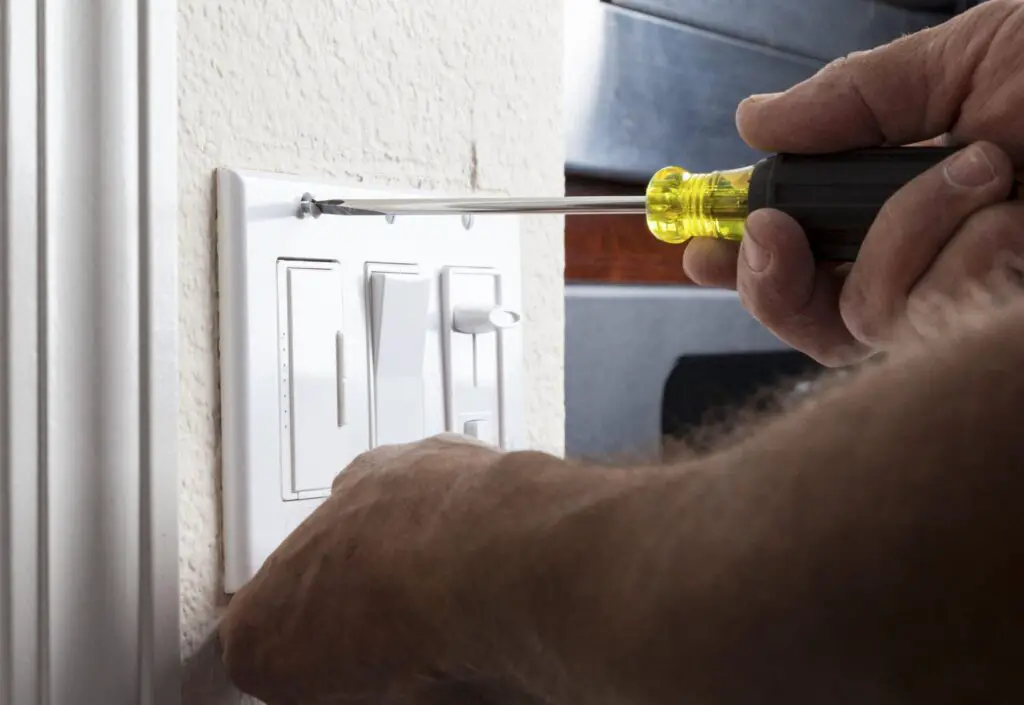
One of the most important ways to prevent drills from stripping screws is to use the correct drill bit size for each screw. Using a bit that is too small can cause the screw head to strip and be difficult or impossible to remove. It is best practice to use a bit that is slightly larger than the screw, which will ensure that it fits snugly and won’t strip.
Another way to prevent drills from stripping screws is to countersink the holes before driving in the screws. Countersinking allows for more contact with the screw head, allowing it to fit firmly into place and helping reduce the chances of it getting stripped. To countersink, you can use a countersink drill bit or a counterboring tool.
Using lubricant can also help reduce strain on the drill and prevent stripping screws when drilling into hard materials. A basic lubricant such as WD-40 should be applied directly to the drill bit prior to drilling into tough material; this will reduce friction and help keep everything running smoothly.
It’s also important to make sure that you’re using an appropriate speed when drilling. If you’re using too high of a speed, this can cause excess strain on both your drill and your screws, leading them to become stripped in no time at all. For hard materials, especially, it’s best practice to use a slower speed setting so as not to overtax your equipment or risk stripping screws due to excess strain.
Always start by drilling pilot holes if possible, especially for large screws or if you are drilling into tough material like metal or hardwood. Pilot holes allow for more control over the placement of each screw and greatly reduce the chances of stripping due to excess strain from incorrect placement or angle when attempting larger screws or tougher materials without adequate preparation beforehand.
Read Also: Can WD-40 Remove A Screw?
How To Remove A Stripped Screw
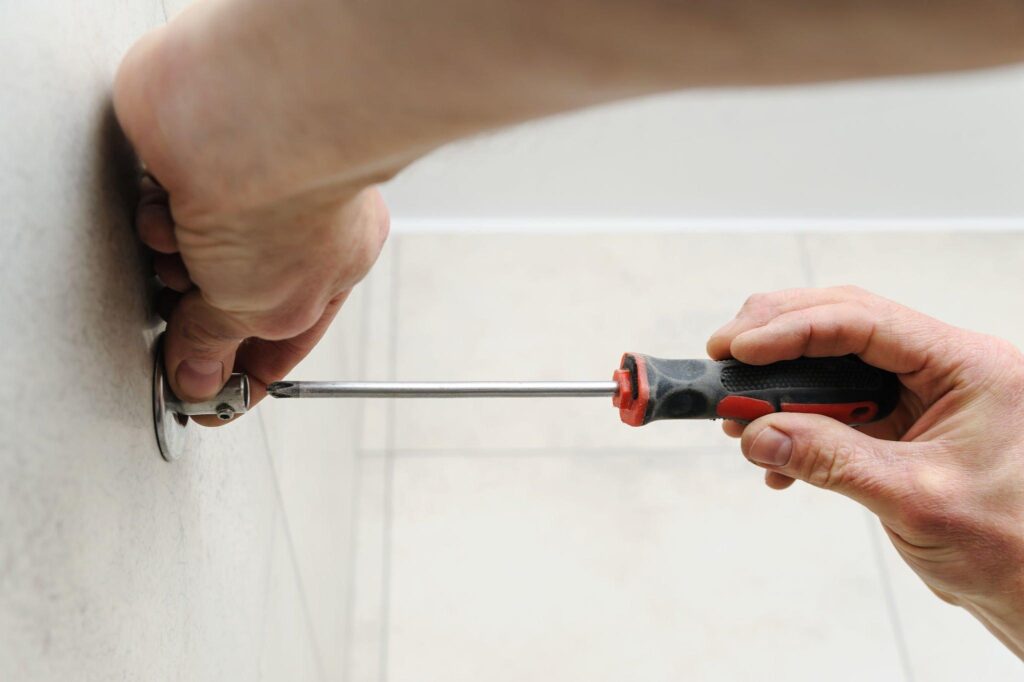
Removing a stripped screw can be a frustrating task, but with the right tools and techniques, it can be done. Here are some tips for removing a stripped screw:
- Use a screwdriver with a larger handle: A larger handle screwdriver will give you more leverage and make it easier to turn the screw.
- Use a screwdriver with a thicker shank: A thicker shank will give you more surface area to grip, making it easier to turn the screw.
- Use pliers: If the screwdriver isn’t working, try using pliers to grip the head of the stripped screw and turn it.
- Use a rubber band: Place a rubber band over the head of the stripped screw and use a screwdriver to turn it. The rubber band will provide extra grip.
- Use a screw extractor: A screw extractor is a tool specifically designed to remove stripped screws. It works by biting into the metal of the stripped screw and allowing you to turn it out.
- Drill a hole in the center of the screw head: Drill a small hole in the center of the stripped screw head. Next, use a screwdriver or a screw extractor to remove the screw.
- Use penetrating oil: Spray penetrating oil on the stripped screw, wait a few minutes, and then try to remove the screw using a screwdriver or pliers.
- Use a hammer and a punch: Place the point of a punch in the center of the screw head, then gently tap it with a hammer to create a new groove for the screwdriver to grip.
By following these tips, you should be able to remove a stripped screw. If all else fails, you can always contact a professional for help.
FAQ About Drill Keeps Stripping Screws
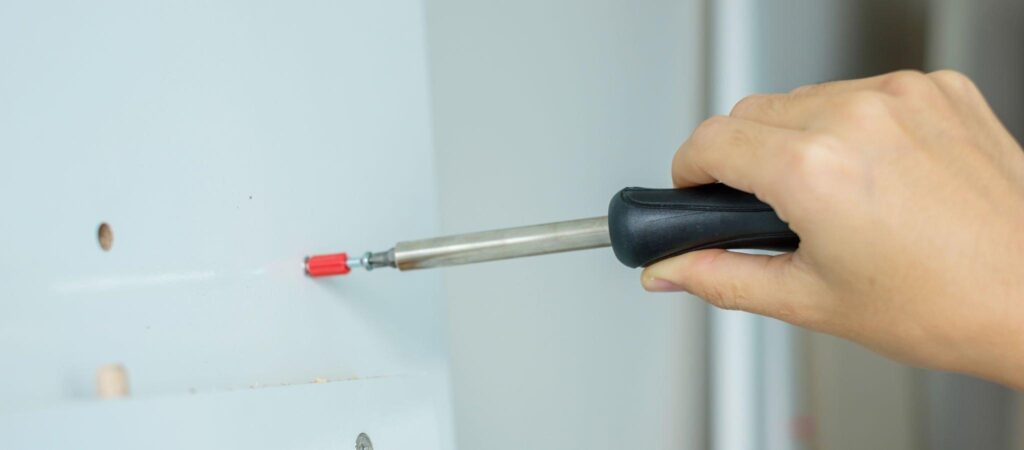
What type of drill bit should I use to prevent stripping screws?
To prevent stripping screws, use a drill bit specifically designed for the type of screw you are using. For example, use a tapered drill bit for wood screws and a masonry bit for concrete screws.
Can I fix a stripped screw?
Stripped screws can be difficult to fix, but one method is to use screw extractor tool to remove the stripped screw. Once the screw is removed, you can then use a larger drill bit to make the hole slightly bigger and insert a new screw.
Is it normal for a drill to strip screws?
Stripping screws while drilling is not normal and can indicate a problem with the drill or the technique being used. Proper alignment of the drill bit, using the correct drill bit, using a lower drill speed, and applying less pressure when drilling can help prevent stripping screws.
Final Words
In final words, it can be said that there are several measures that can be taken to prevent drill stripping screws. It is important to ensure that the correct type of bit is used for the size and type of screw being used and that the bit is sharp enough for the job. With these tips in mind, you can be sure that your projects will not be hindered by a stripped screw.
Relevant Resources:

